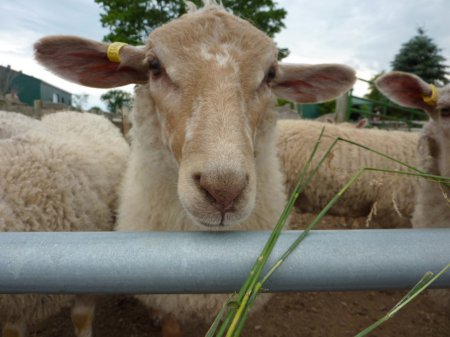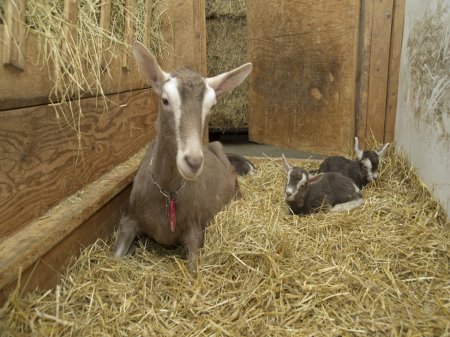Animal health: Coxiellosis (Q Fever)
Learn about the cause, clinical signs, treatment, prevention, management and transmission to humans of coxiellosis (Q fever).
ISSN 1198-712X, Published January 2013
Coxiellosis, or Q fever, is a disease of sheep, goats and cattle, but can also be found in other animals including pets, wildlife and ticks. It can cause disease in some animals and in humans that are exposed to infected animals.
Cause
Coxiellosis is caused by the bacterium Coxiella burnetii. The bacteria are commonly found in sheep (Figure 1), goats and cattle but can also infect other animals such as cats, dogs, rabbits, horses, pigs, rodents, wildlife, birds and ticks. The bacteria can exist in the placenta and birthing fluids as well as the milk, semen, feces and urine of infected animals. The bacteria can remain alive in the environment for long periods of time and can sometimes travel through the air for long distances.

Clinical signs
Animals can be infected throughout their life, and most animals do not show signs of disease. However, infected sheep, goats, cats and dogs may abort in the late stages of pregnancy or may deliver stillborn or weak offspring (Figure 2).

Treatment
Your veterinarian can diagnose and provide treatment recommendations for coxiellosis and may prescribe medications to reduce the spread of the bacteria.
Prevention and management
Separate animals that are aborting from the rest of the herd.
Proper hygiene is important whenever you assist livestock during the birthing process. Properly dispose of birthing fluids and tissues, and keep the birthing area clean.
A vaccine is available for livestock but it is not currently licensed in Canada.
Transmission to humans
People are at risk of developing coxiellosis, especially those who work around infected cattle and sheep that are giving birth. Pregnant women exposed to C. burnetii may abort or have low birth weight babies, and should avoid these animals.
People commonly contract coxiellosis when they handle or breathe dust from contaminated placental material, birth fluids, and the feces or urine of infected herd animals. People can also become infected by drinking unpasteurized milk or by tick bites.
Only about half of all people infected with coxiellosis will become ill. Most cases of coxiellosis begin with flu-like symptoms, including fever, headache, muscle soreness, sore throat, chills and nausea. The fever usually lasts for up to 2 weeks, and weight loss can also occur. Up to half of these people will develop pneumonia, and, in rare cases, a chronic form of the disease, which will last for a year or more, can develop. If you feel that you have symptoms of coxiellosis, contact a physician.
People can prevent coxiellosis by wearing a properly fitted respirator mask when working with cattle and sheep that have recently given birth, by wearing gloves and washing hands after handling birthing tissues and products, and by only consuming pasteurized milk and dairy products.
Reporting
Veterinary laboratories in Ontario and veterinarians who use a laboratory outside of Ontario must notify the Ontario Ministry of Agriculture, Food and Rural Affairs (OMAFRA) if a case of coxiellosis is diagnosed in Ontario. OMAFRA will work with producers to strengthen biosecurity and prevent the spread of disease. OMAFRA will also work with public health officials to ensure that people exposed to coxiellosis receive prompt medical attention.
For more information on animal health, go to Ontario.ca/animalhealth.
Reference
Manitoba Agriculture, Food and Rural Initiatives Chief Veterinary Office/ Food Safety Knowledge Centre. Q Fever Animal Health and Welfare Management. 2011.